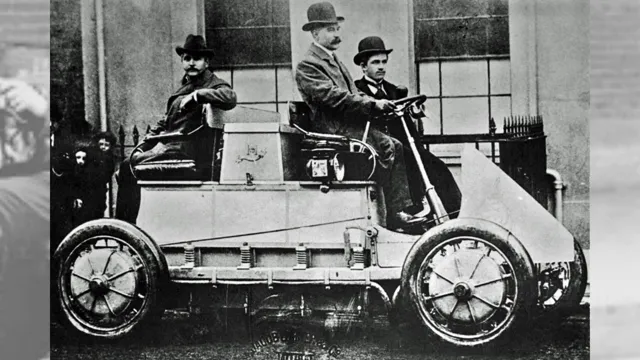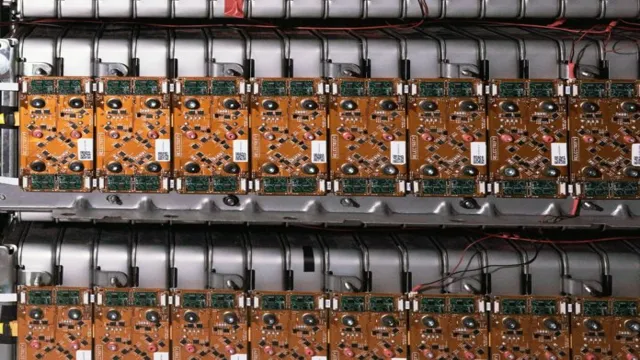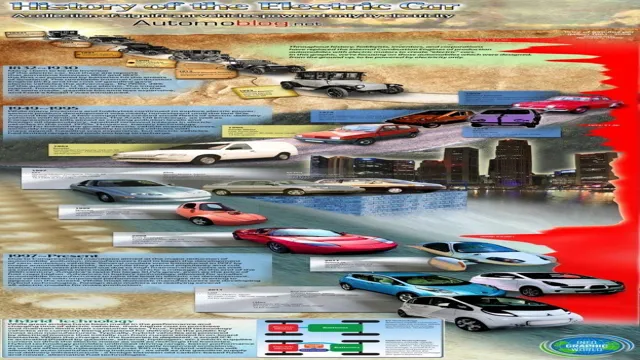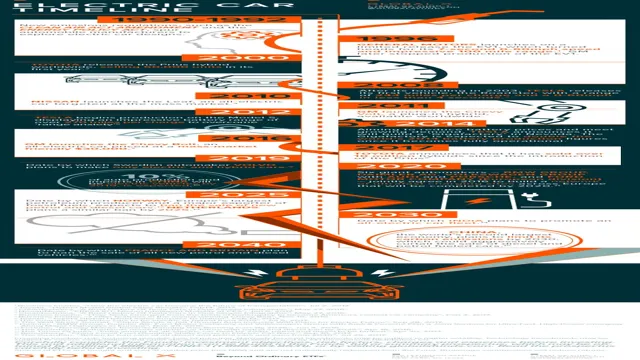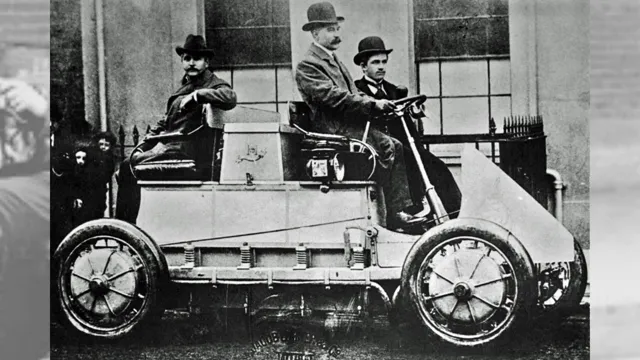Spark of Innovation: Tracing the Early History of the Electric Car
Electric cars are now a common sight on the roads of many countries around the world, but this was not always the case. In fact, the early history of electric cars is a fascinating story of innovation and experimentation. While the internal combustion engine became the dominant technology in the early years of the automobile, electric cars were also being developed and refined by inventors and entrepreneurs.
With the rise of concern over pollution and fossil fuel dependence in recent years, the electric car has once again become a focus of attention, but the story of its early history is an important piece of the puzzle. So, just how did the electric car get its start, and what were some of the challenges and innovations involved in its development? In this blog, we’ll explore the fascinating world of the early electric car and shed light on this important piece of automotive history.
Invention and Development
The early history of the electric car was full of innovation and development as inventors worked to create a vehicle that didn’t rely on combustion engines. In 1828, Hungarian Ányos Jedlik created the first electric car prototype using a small model car powered by an electric motor. While the car wasn’t practical for everyday use, it did lay the groundwork for future electric car designs.
Fast forward to the late 1800s, when several electric car companies began to make their mark, including Thomas Parker’s electric car, which was built in London in 188 By the turn of the century, electric vehicles were quite popular, and some were even used as taxis in cities such as New York. However, the widespread adoption of gasoline-powered vehicles eventually led to a decline in the popularity of electric cars, and it wasn’t until the last few decades that they began to make a comeback.
Today, electric cars are more efficient, more powerful, and more widely available than ever before, offering a cleaner and more sustainable alternative to traditional gasoline-powered cars.
The 1800s: First Electric Cars
The invention and development of electric cars trace back to the 1800s, where inventors like Thomas Davenport and Robert Davidson built the first electric cars. Davenport created a small locomotive that runs on battery power, while Davidson’s built an electric carriage called the Galvani. While their designs were groundbreaking at the time, it was a British inventor named Thomas Parker who can be credited as the father of the electric car.
Parker created the first practical electric car in 1884, which he used to transport people around his factory. However, the electric car’s popularity declined due to the rise of gasoline-powered vehicles, which allowed drivers to venture further and faster. Despite this, electric cars still had their niche audience, such as the elderly or women who wanted a quieter ride.
Parker continued to improve the electric car’s design, creating a more efficient battery that could hold a charge longer. He even designed an electric taxi for the London Electric Cab Company, which operated on the streets of London in the early 1900s. The innovation and development of electric cars during the 1800s paved the way for modern-day electric vehicles that we see on the roads today.
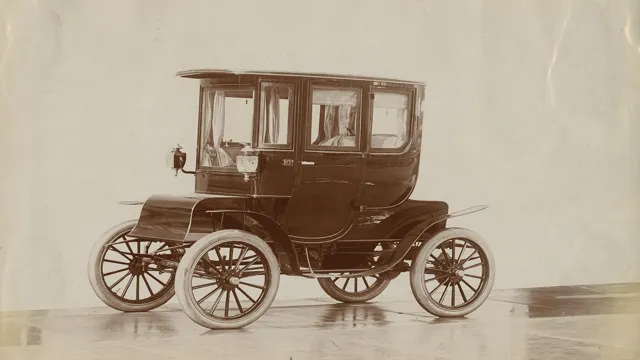
1900s-1920s: Electric Cars vs. Gasoline Cars
During the late 1800s and early 1900s, there was a heated debate about whether electric cars or gasoline cars would emerge as the dominant automobile. At the time, electric cars were seen as cleaner and more efficient, while gasoline cars were more powerful and able to travel longer distances. Although electric cars were invented before the gasoline-powered counterparts, they were soon overshadowed by them due to the limitations of battery technology at the time.
Gasoline cars were able to travel further and faster while also being more affordable. Despite this, electric cars enjoyed a significant following, particularly among urban dwellers, who appreciated their quiet operation, ease of use, and lack of smog. Invented by American inventors such as Thomas Davenport and Thomas Edison, electric cars underwent significant development during the early 1900s.
The addition of powerful electric motors and improvements in battery technology meant that electric cars were slowly but surely improving their range, efficiency, and speed, although they were still not quite a match for their gasoline-powered counterparts.
Decline of Electric Cars
The early history of the electric car saw great promise, but unfortunately, it was also accompanied by decline. The first electric car was invented in 1832 and by the late 1800s, it had gained popularity as a reliable and clean transportation option. However, with the invention of the internal combustion engine, gasoline-powered cars became more prevalent, and electric cars gradually lost favor.
Additionally, the high cost and limited driving range of electric cars at the time made them undesirable. As a result, by the 1930s, electric cars had virtually disappeared from the market. Despite this setback, electric cars continued to make appearances throughout the years, but it wasn’t until recently that they gained significant popularity once again.
The current generation of electric cars features improved technology and better battery life, making them a viable option for environmentally-conscious drivers.
Rise of Gasoline Cars
Rise of Gasoline Cars: Decline of Electric Cars While electric cars are slowly gaining popularity in recent years, it wasn’t always the case. In the early 20th century, electric cars were actually more common than gasoline-powered cars. However, with advancements in technology and oil becoming cheaper and more accessible, gasoline cars quickly rose in popularity, causing a decline in electric cars.
Unfortunately, electric cars at that time had many limitations. They had a shorter range than gasoline cars and were much slower, making them less practical for long-distance travel. Furthermore, the technology of the time made electric cars much more expensive to produce than gasoline cars.
As gasoline cars continued to develop, they became more reliable, efficient, and affordable. Gasoline cars were also favored by automakers because they required less infrastructure to support, such as charging stations.
It wasn’t until recently that electric cars started making a comeback.However, for many years, the automotive industry focused almost exclusively on gasoline cars. The development of electric cars was slow and often faced opposition, and it wasn’t until the early 2000s that the industry started taking electric cars seriously again. Now, with more advanced technology, electric cars are becoming increasingly popular.
They offer a much cleaner and more sustainable alternative to traditional gasoline cars, and the infrastructure to support them is growing rapidly. While it may have taken a long time for electric cars to catch up, it’s clear that they are here to stay.
Disadvantages of Early Electric Cars
As the first wave of electric cars hit the market in the early 1900s, they were met with considerable enthusiasm. However, their popularity was short-lived. The high cost of manufacturing, limited driving range, and long charging times made them less appealing than their gasoline-powered counterparts.
Additionally, the development of more efficient gasoline engines and the discovery of large oil reserves made gasoline a cheaper fuel option for most consumers. These factors led to a decline in electric car production and a shift towards gasoline-powered vehicles. While the decline of electric cars was disappointing, it also paved the way for new innovations in the automotive industry.
Today, electric cars have made a comeback thanks to advancements in technology and increased environmental awareness. However, there is still much to be done to make electric cars more accessible and affordable for the masses.
Revival of Electric Cars
The early history of the electric car is fascinating. The popularization of electric vehicles dates back to the late 19th century when they were introduced as a potential alternative to horse-drawn carriages. However, it wasn’t until the early 20th century that electric cars began to gain widespread popularity.
Rapid advancements in automotive technology during the early 1900s led to an increase in production and adoption of electric vehicles. By the 1920s, electric cars outnumbered their gasoline-powered counterparts on American roads, and several major car manufacturers, including Ford and General Motors, produced electric models. However, the development of the internal combustion engine and the mass production of gasoline vehicles led to a decline in the electric car’s popularity by the 1930s, and they all but disappeared from the market altogether.
Today, electric cars are making a comeback as advances in technology have made them more practical, affordable, and eco-friendly. The early history of the electric car is an important reminder of the potential of emerging technologies and the importance of innovation in the face of changing social and environmental factors.
Late 20th Century: Electric Cars Re-emerge
In the late 20th century, electric cars experienced a re-emergence, and their revival has been nothing short of remarkable. After decades of being overshadowed by their gas-guzzling counterparts, electric cars found new life as people started to become more aware of the harmful effects of fossil fuels on the environment. Advances in battery technology also played a crucial role in the revival, making electric cars more practical and efficient.
With the rise of the Tesla brand, electric cars have become synonymous with luxury and innovation, and other car manufacturers have followed suit with their own electric offerings. Today, electric cars are seen as a viable alternative to gas-powered vehicles, and they are getting more popular by the day as people look for ways to reduce their carbon footprint and contribute to a cleaner environment. The future of electric cars is bright, and it’s exciting to see how this technology will continue to evolve in the coming years.
21st Century: Electric Cars and Environmentalism
Electric Cars In this era of increasing environmental consciousness, electric cars have become a popular solution to the problem of air pollution. The revival of electric cars began in the latter half of the 21st century, with government policies encouraging the production and adoption of electric cars. Early models were plagued with problems such as limited battery range and long charging times.
However, technological advancements over the years have mitigated these issues, making electric cars increasingly practical. The advent of new battery chemistry has led to longer-lasting batteries that can now travel up to 300 miles on a single charge. These advancements have contributed to the popularity of electric cars as more and more people are choosing to switch from traditional fossil fuel cars to more eco-friendly electric cars.
Though there is still some way to go before they become completely mainstream, the rise of electric cars is a positive step towards a cleaner and greener future.
Conclusion
In the early history of the electric car, it struggled to gain momentum as it competed with the growing popularity of gasoline-powered vehicles. Despite this, the electric car paved the way for future innovation and technological advancements in the automotive industry. Today, electric cars are gaining popularity and have become a symbol of progress towards a more sustainable future.
So, let’s charge up our batteries and take the electric car on the road to a greener tomorrow!”
FAQs
What is the early history of the electric car?
The early history of the electric car dates back to the 1830s when the first electric carriage was invented and produced in Scotland.
Who invented the first electric vehicle?
Robert Anderson, a Scottish carriage maker, is credited with inventing the first electric vehicle in 1832.
When did electric cars become popular?
The use of electric cars peaked in the early 1900s before the rise of gasoline-powered vehicles and the mass production techniques used to produce them.
What led to the decline of electric cars?
The decline of electric cars in the early 1900s was largely due to the high cost of batteries and limited driving range compared to gasoline-powered vehicles.
